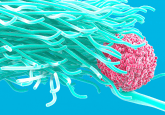Exploiting molecular biology for diagnosis and targeted management of pediatric low-grade gliomas

The majority of brain tumors arising in children are low-grade gliomas. Although historically categorized together as pediatric low-grade gliomas (PLGGs), there is significant histologic and genetic diversity within this group. In general, prognosis for PLGGs is excellent, and limitation of sequelae from tumor and treatment is paramount. Advances in high-throughput genetic sequencing and gene expression profiling are fundamentally changing the way PLGGs are classified and managed. Here, we review the histologic subtypes and highlight how recent advances in elucidating the molecular pathogenesis of these tumors have refined diagnosis and prognostication. Additionally, we discuss how characterizing specific genetic alterations has paved the way for the rational use of targeted therapies that are currently in various phase clinical trials.
Pediatric low-grade glioma (PLGG) represents the most common brain tumor of childhood [1]. For the majority of children with PLGG these tumors are primarily managed with surgery, with gross total resection often leading to excellent durable disease control [2]. However, tumors residing in critical locations where complete resection is not safe may pose a threat to neurologic function and survival. For instance, about three-quarters of patients with cerebral and cerebellar hemisphere tumors are able to undergo gross total resection, while less than a quarter of children with chiasmic-hypothalamic and midline tumors are able to have a complete resection.
Click here to view the full article in Future Oncology.


